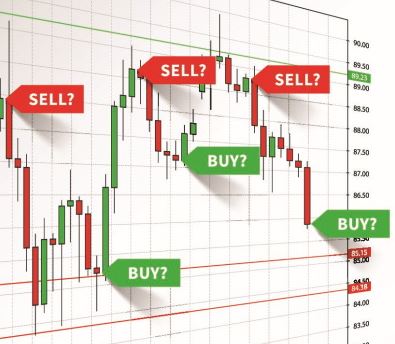In the hyper-competitive forex market, every investor is looking for an edge. Even though traders routinely debate what constitutes a trading advantage, there is no doubt that many put considerable effort into forex trading signals. Keep up with the market with forex trading signals, one of the most essential tools in your arsenal as a forex trader.
If you are currently unfamiliar with forex trading signals, they are triggers that allow traders to enter a trade for a set currency pair and time at a fixed price. Instead of being an automated process (although many choose to do so), it is an emerging pattern in the market that acts as a trigger to trade. Forex signals are usually generated by dedicated analysts or automated Forex robots, who relay them to Forex signal service subscribers. Most are sent via email, electronic alert, RSS, SMS, or live feed because they need instant, up-to-the-minute information.

Following this explanation of the basics of forex trading signals, let’s look at the types of signals you’ll need to master to understand the market better and avoid common pitfalls.
1. Buy Signals
You are now aware that forex signals can trigger a move in the market. The most common signal relates to buying a particular currency, so let’s start with that. To determine whether one currency is worth buying over another, buy signals indicate when a forthcoming event or condition will cause that currency to rise in value. In addition to being so common, this type is often categorized as “Buy” and “Strong Buy.” Whenever one of these situations appears, you should consider acquiring the currency listed more or less immediately.
2. Sell Signals
It is common to see a sell signal when a currency performs poorly or is about to undergo a downturn. Sell signals indicate the reverse of an entire swing away from its counterpart. A single reason can be fundamental or analytical. Still, whatever the circumstances, it usually serves as a pretty clear sign that you should drop a particular currency as soon as possible.

3. Volume Signals
If large amounts of a particular currency are moving one way or another, you may receive a volume signal. The forex market becomes more interesting when one is in effect, as it forces you to examine the reasons behind the movement and how it affects your trading strategies. A volume signal is not a direct signal to purchase or sell but rather an indication of a current market trend that is important to consider.
4. Momentum Signals
Several economic shifts and associated momentum contribute to the movement of the forex market. This is why when momentum-based forex trading signals are issued, it pays close attention, as these signals can help predict the future shape of the market. Generally, momentum signals are based on the buying strength of a particular currency.
If one appears, you can determine it’s worth keeping an eye on the listed currency, which could be on the verge of a rise.
Bottom line
In the trading world, forex signals are used by investors around the world, and there is a good reason why. These signals assist investors in making decisions, especially in times of critical thinking. It does not matter whether you choose to trade forex using an automated signal-trading system, which is becoming increasingly common, or if you choose to trade forex manually; these signals should, in any case, be an integral part of your trading strategy.


